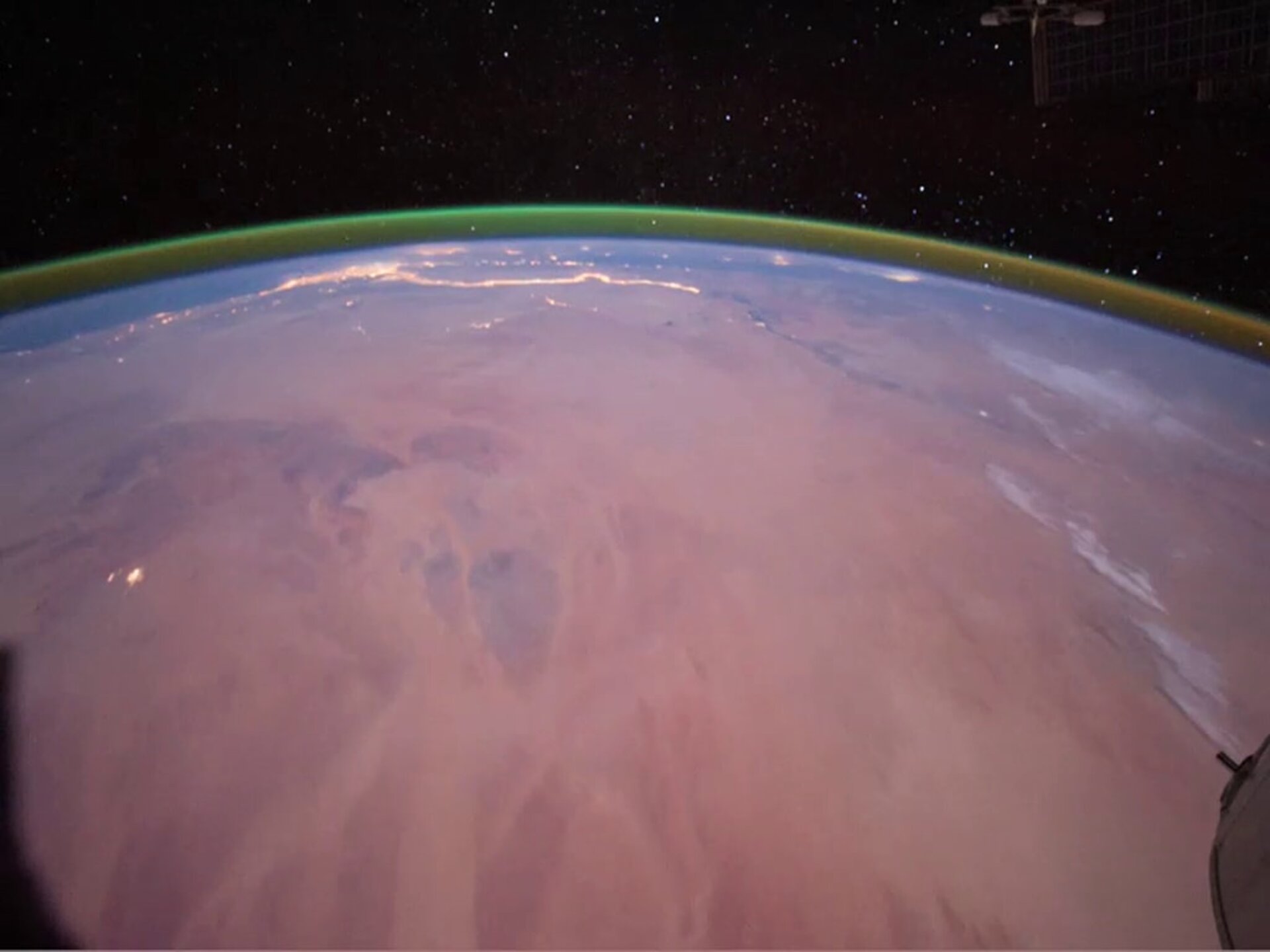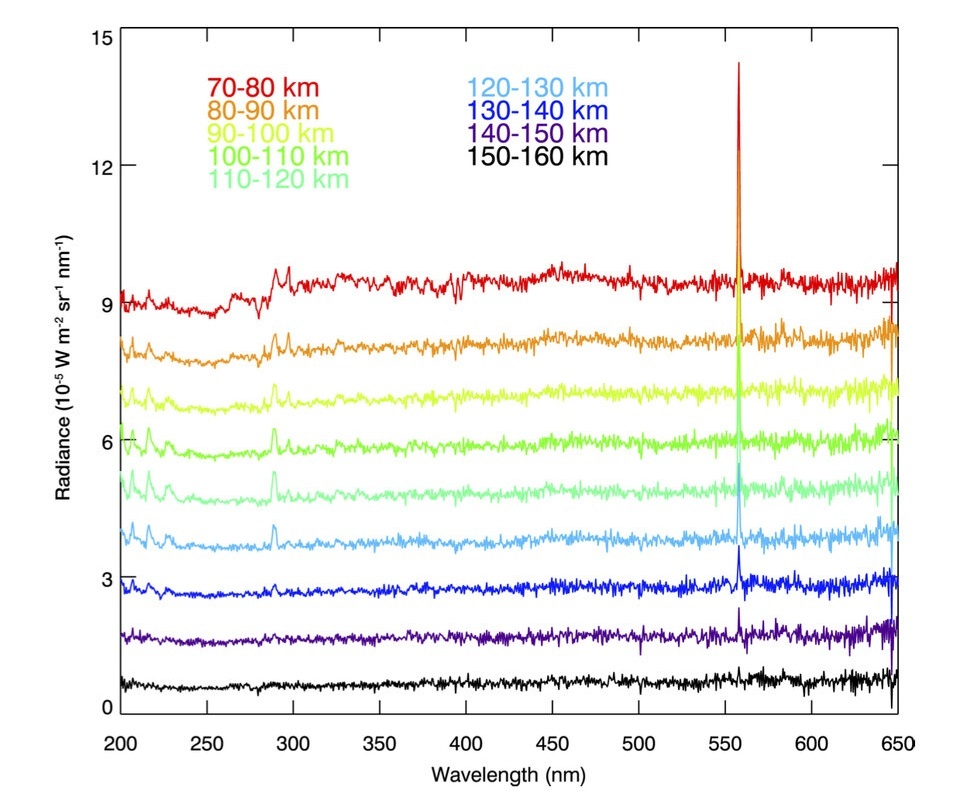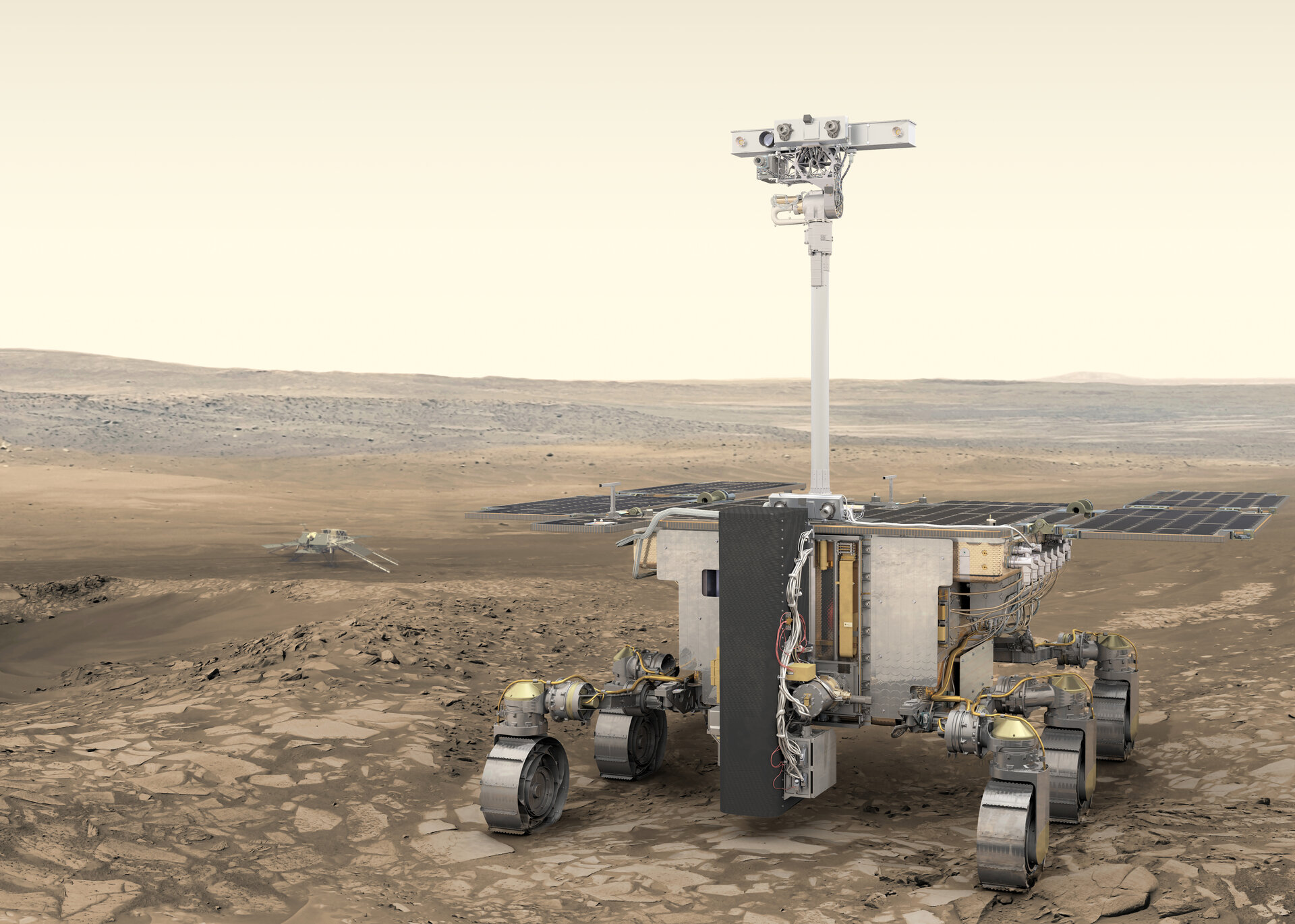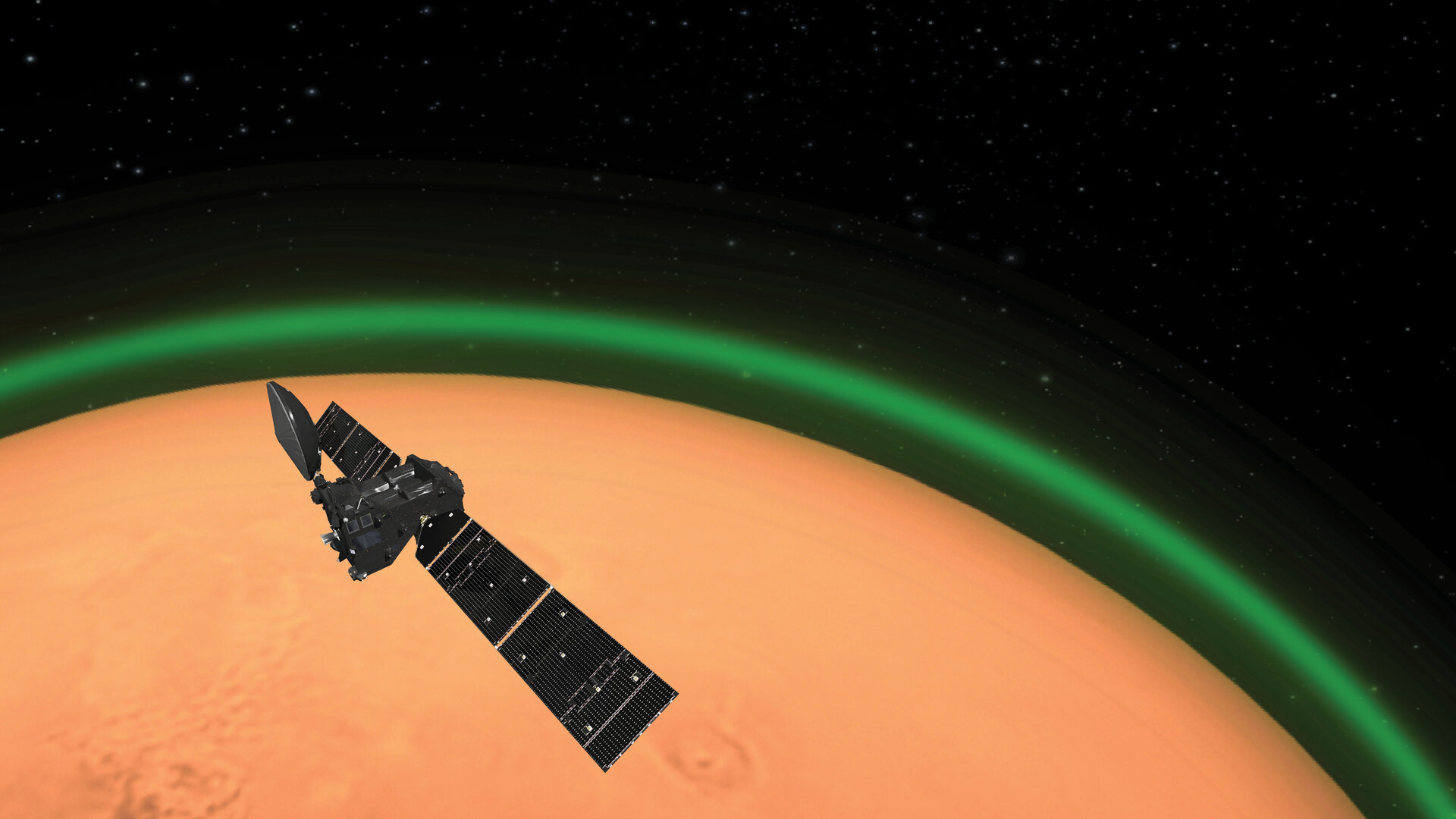In the course of studying Mars, scientists have come to identify some key similarities to Earth’s own. One notable example is the way our atmospheres interact with sunlight to produce dazzling displays of energy. On Earth, these include not just the aurorae near the polar regions (Aurora Borealis and Australis), but the constant green glow that is the result of oxygen molecules interacting with sunlight (aka. “airglow”).
On Earth, airglow can be seen “edge-on” from space, as exemplified by the many spectacular images that are taken by astronauts aboard the International Space Station (ISS). This phenomenon was recently observed around Mars for the first time by the ESA’s Trace Gas Orbiter (TGO), which arrived at Mars in 2016 a part of the ExoMars program. Like aurorae, this observation is yet another example of how Mars is “Earth’s Twin.”
Depending on the time of day, this glow is caused by different mechanisms. Whereas dayglow is the result of the dissociation of nitrogen and oxygen molecules by solar radiation, nightglow is caused by these dissociated molecules recombining. In all cases, the brightest emissions come from excited oxygen atoms, which emit the characteristic green radiation (which is what gives the Northern Lights their dominant green color).

Until now, scientists have not been able to observe this effect around other planets because of the way light reflected from their surfaces would overpower it. While scientists have speculated for decades that Mars experiences airglow, the phenomenon was only recently detected by the TGO’s Nadir and Occultation for Mars Discovery (NOMAD) science team.
The study that described their findings appeared recently in Nature Astronomy. As Jean-Claude Gérard, a Professor at the Université de Liège’s STAR Institute and the lead author of the study, said in a recent ESA press statement:
“One of the brightest emissions seen on Earth stems from night glow. More specifically, from oxygen atoms emitting a particular wavelength of light that has never been seen around another planet. However, this emission has been predicted to exist at Mars for around 40 years – and, thanks to TGO, we’ve found it.”
As one of many tools the TGO is equipped with, NOMAD is an advanced suite of instruments that the orbiter uses to search for signature gases in Mars’ atmosphere – which could offer telltale clues to Mars’ past and subsequent evolution. It consists of multiple spectrometers, including the ultraviolet and visible spectrometer (UVIS) instrument, and is capable of conducting observations in various positions.

This includes being pointed directly down towards the Martian surface (aka. the “nadir” channel). Ann Carine Vandaele of the Royal Belgian Institute for Space Aeronomy is also the Principal Investigator of NOMAD and a co-author of the study. As she explained, it was the decision to reorient NOMAD’s UVIS instrument that allowed their team to observe it around another planet for the first time:
“Previous observations hadn’t captured any kind of green glow at Mars, so we decided to reorient the UVIS nadir channel to point at the ‘edge’ of Mars, similar to the perspective you see in images of Earth taken from the ISS.”
Together with an international team of colleagues – which included members from The Open University in Milton Keynes, UK; the Instituto de Astrofìsica de Andalucía in Granada, Spain; and the Istituto di Astrofisica e Planetologia Spaziali in Rome, Italy – they observed Mars’ atmosphere for a period of over seven months (from April 24th and December 1st, 2019).
In this time, the team used NOMAD-UVIS to scan altitudes ranging from 20 to 400 km (12.5 to 250 mi) above the Martian surface, twice per orbit. When they analyzed these datasets, they found the green oxygen emission in all of them. However, the emissions were strongest at an altitude of around 80 km (50 mi) and varied depending on the distance between the Earth and the Sun.

To better understand how airflow worked on Mars and how it compares to what we see here on Earth, Jean-Claude and his colleagues dug further into how it was formed. Simultaneously comparing these two kinds of emission showed that the visible emission was 16.5 times more intense than the ultraviolet. Said Jean-Claude:
“We modeled this emission and found that it’s mostly produced as carbon dioxide, or CO2, is broken up into its constituent parts: carbon monoxide and oxygen. We saw the resulting oxygen atoms glowing in both visible and ultraviolet light. The observations at Mars agree with previous theoretical models but not with the actual glowing we’ve spotted around Earth, where the visible emission is far weaker. This suggests we have more to learn about how oxygen atoms behave, which is hugely important for our understanding of atomic and quantum physics.”
These observations are significant because they could reveal a great deal about the composition and dynamics of the Martian atmosphere. In addition, they can help astronomers to understand how our Sun deposits energy onto the Red Planet, both in the form of sunlight and the stream of charged particles emanating from the Sun’s surface (aka. solar wind).
This understanding is key to characterizing planetary atmospheres, related phenomena (such as aurorae). By deciphering the structure and behavior of airglow in Mars’ atmosphere, scientists will also be able to gain insight into an altitude range that has remained largely unexplored. They will also be able to see how the atmosphere’s dynamics change in response to changes in the Sun’s activity.

As Håkan Svedhem, ESA’s TGO Project Scientist, explained:
“This is the first time this important emission has ever been observed around another planet beyond Earth, and marks the first scientific publication based on observations from the UVIS channel of the NOMAD instrument on the ExoMars Trace Gas Orbiter.
“It demonstrates the remarkably high sensitivity and optical quality of the NOMAD instrument. This is especially true given that this study explored the dayside of Mars, which is much brighter than the nightside, thus making it even more difficult to spot this faint emission.”
Insights into Mars’ atmosphere will also come in handy when it comes time to send additional missions to Mars. Atmospheric density and drag, for example, are key considerations for orbiters that skim the Martian atmosphere, not to mention when developing Entry, Descent, and Landing (EDL) for landers and rovers.
When it comes to Mars, getting missions to the surface safely has always been a challenge (aka. the “Mars Curse“). And with missions like the ExoMars 2022, which will consist of the Rosalind Franklin rover (designed by the ESA) and a surface platform designed by Roscosmos, to the surface of Mars between April and July in 2023.
Further Reading: ESA, Nature Astronomy

